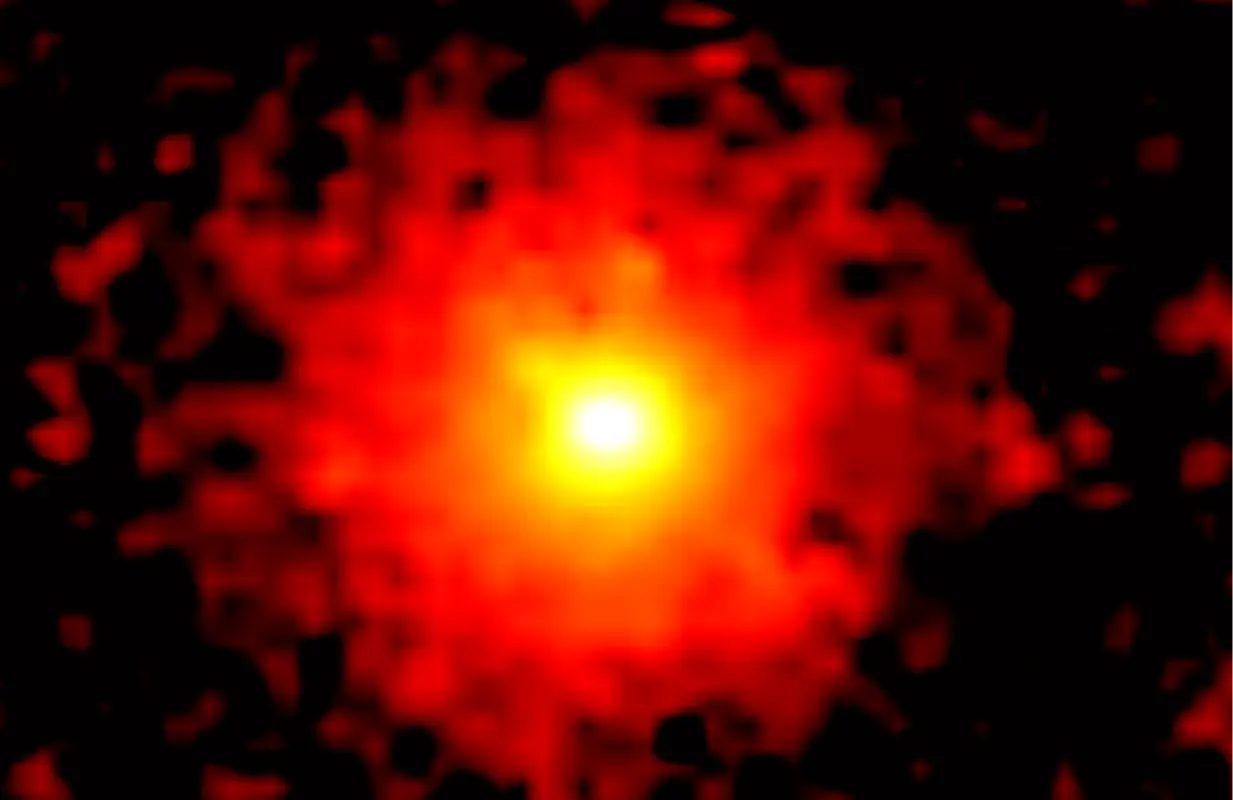Interstellar comet 3I/ATLAS shows extended halo and distinct jet features
-
 Comet 3I/ATLAS (Image via NASA)
Comet 3I/ATLAS (Image via NASA)The interstellar object 3I/ATLAS was recently recorded exhibiting an extended halo and multiple jet structures following its perihelion passage.
According to observations by M. Jäger, G. Rhemann, and E. Prosperi on November 8, 2025, the object displayed several distinct jets and a bright halo extending approximately half a million kilometers into space.
Harvard professor Avi Loeb, who has closely followed the object’s trajectory, noted that such post-perihelion activity offers an important period for analyzing its behavior and composition.
These recent findings provide new data on the physical characteristics and dynamic processes occurring within 3I/ATLAS after its closest approach to the Sun.
Complex jet structure observed following 3I/ATLAS perihelion
Observation details and imaging data
At 4:10 Universal Time on November 8, 2025, 3I/ATLAS was observed at 29 degrees separation from the Sun.
The observing team: M. Jäger, G. Rhemann, and E. Prosperi, used stacked imaging data consisting of 24 green-filter exposures of 35 seconds each, as well as two exposures each in red and blue filters.
The combined data revealed a luminous halo extending approximately 500,000 kilometers, corresponding to about five arcminutes in apparent diameter.
Within this halo, at least seven distinct jets were identified, several of which were directed sunward, forming anti-tail structures.
The comet’s position during the observation was between 7 and 10 degrees above the horizon. The imaging session took place under bright moonlight and was later interrupted by the onset of twilight.
Despite these limiting conditions, the observations provided a clear record of the jet and halo features surrounding 3I/ATLAS.
Jet activity and mass ejection
The large number of jets appearing in multiple directions implies significant outgassing activity.
As indicated in the report by M. Jäger, G. Rhemann, and E. Prosperi, the non-gravitational acceleration previously noted for 3I/ATLAS suggests that more than 10–20% of its initial mass could have been expelled near perihelion.
Only part of this ejected mass appears to have moved in a preferred direction, meaning that the surrounding debris cloud may represent a substantial fraction of the comet’s total mass.
In a related discussion, Avi Loeb stated that perihelion represents a critical phase for studying interstellar objects, as solar heating can trigger physical transformations or fragmentation.
He noted that if 3I/ATLAS’s acceleration were entirely natural, it would likely result from volatile materials being released.
However, if driven by propulsion mechanisms, a smaller expelled mass at a higher velocity could account for the same effect.
Perihelion and subsequent trajectory
According to Avi Loeb, 3I/ATLAS reached its perihelion on October 29, 2025, at a distance of about 203 million kilometers from the Sun. Following that point, it began its outward journey through the Solar System.
Loeb stated that during early November, 3I/ATLAS would pass approximately 97 million kilometers from Venus and later approach within 267 million kilometers of Earth by December 19, 2025, assuming a gravitationally driven path.
On March 16, 2026, the object is expected to reach its closest approach to Jupiter, about 54 million kilometers away, where NASA’s Juno spacecraft could potentially detect it using imaging and radio instruments.
Ongoing studies and unresolved questions
The latest imaging reveals that 3I/ATLAS is enveloped by a large halo and shows various jet features. Still, the exact processes causing these emissions have not been figured out yet.
In their paper, M. Jäger, G. Rhemann, and E. Prosperi wrote that it is a mystery whether the jets are the result of natural cometary activities like the sublimation of ice pockets or of some kind of controlled thrust.
Additional observations from terrestrial telescopes and maybe spacecraft detections over the next several weeks will certainly give more clues about the physical nature and composition of this interstellar visitor.
Stay tuned for more updates.
TOPICS: 3I/ATLAS, 3I/ATLAS comet, 3I/ATLAS images, 3I/ATLAS interstellar object, 3I/ATLAS observations, 3I/ATLAS trajectory, Avi Loeb 3I/ATLAS
- YouTube removes AI-generated 3I/ATLAS videos impersonating Harvard Professor Avi Loeb
- New analysis presents unusual features documented in the 3I/ATLAS trajectory and activity
- Periodic light variability in interstellar object 3I/ATLAS linked to jet activity
- What we know so far about 3I/ATLAS: Everything understood to date